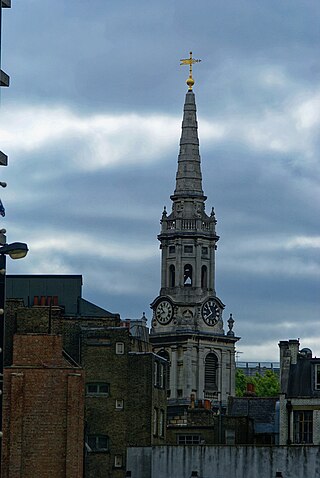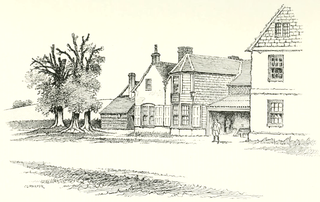Related Research Articles

Juggling is a physical skill, performed by a juggler, involving the manipulation of objects for recreation, entertainment, art or sport. The most recognizable form of juggling is toss juggling. Juggling can be the manipulation of one object or many objects at the same time, most often using one or two hands but other body parts as well, like feet or head. Jugglers often refer to the objects they juggle as props. The most common props are balls, clubs, or rings. Some jugglers use more dramatic objects such as knives, fire torches or chainsaws. The term juggling can also commonly refer to other prop-based manipulation skills, such as diabolo, plate spinning, devil sticks, poi, cigar boxes, contact juggling, hooping, yo-yo, hat manipulation and kick-ups.

The Regency era of British history is commonly understood as the years between c. 1795 and 1837, although the official regency for which it is named only spanned the years 1811 to 1820. King George III first suffered debilitating illness in the late 1780s, and relapsed into his final mental illness in 1810; by the Regency Act 1811, his eldest son George, Prince of Wales, was appointed prince regent to discharge royal functions. When George III died in 1820, the Prince Regent succeeded him as George IV. In terms of periodisation, the longer timespan is roughly the final third of the Georgian era (1714–1837), encompassing the last 25 years or so of George III's reign, including the official Regency, and the complete reigns of both George IV and his brother and successor William IV. It ends with the accession of Queen Victoria in June 1837 and is followed by the Victorian era (1837–1901).

William Hazlitt was an English essayist, drama and literary critic, painter, social commentator, and philosopher. He is now considered one of the greatest critics and essayists in the history of the English language, placed in the company of Samuel Johnson and George Orwell. He is also acknowledged as the finest art critic of his age. Despite his high standing among historians of literature and art, his work is currently little read and mostly out of print.

James Henry Leigh Hunt, best known as Leigh Hunt, was an English critic, essayist and poet.
This article contains information about the literary events and publications of 1820.

Fives is an English handball sport derived from jeu de paume, similar to the games of handball, Basque pelota, and squash. The game is played in both singles and doubles teams, in an either three- or four-sided court.
The art of juggling has existed in various cultures throughout history. The beginning is uncertain. The first depictions were found in ancient Egypt, China, Greece, and Rome, as well as medieval and modern societies.
The Morning Chronicle was a newspaper founded in 1769 in London. It was notable for having been the first steady employer of essayist William Hazlitt as a political reporter and the first steady employer of Charles Dickens as a journalist. It was the first newspaper to employ a salaried woman journalist, Eliza Lynn Linton; for publishing the articles by Henry Mayhew that were collected and published in book format in 1851 as London Labour and the London Poor; and for publishing other major writers, such as John Stuart Mill.

St Giles is an area in London, England and is located in the London Borough of Camden. It is in Central London and part of the West End. It gets its name from the parish church of St Giles in the Fields. The combined parishes of St Giles in the Fields and St George Bloomsbury were administered jointly for many centuries; leading to the conflation of the two, with much or all of St Giles usually taken to be a part of Bloomsbury. Points of interest include the church of St Giles in the Fields, Seven Dials, the Phoenix Garden, and St Giles Circus.

Percy Bysshe Shelley was an English writer who is considered as one of the major English Romantic poets. A radical in his poetry as well as in his political and social views, Shelley did not achieve fame during his lifetime, but recognition of his achievements in poetry grew steadily following his death, and he became an important influence on subsequent generations of poets, including Robert Browning, Algernon Charles Swinburne, Thomas Hardy, and W. B. Yeats. American literary critic Harold Bloom describes him as "a superb craftsman, a lyric poet without rival, and surely one of the most advanced sceptical intellects ever to write a poem."
William Mudford was a British writer, essayist, translator of literary works and journalist. He also wrote critical and philosophical essays and reviews. His 1829 novel The Five Nights of St. Albans: A Romance of the Sixteenth Century received a good review from John Gibson Lockhart, an achievement which was considered a rare distinction. Mudford also published short fictional stories which were featured in periodicals such as Blackwood's Edinburgh Magazine, Fraser's Magazine, and Bentley's Miscellany.
Matt Cavanagh is a British political adviser and author. He was a special adviser in the UK Labour government (2003–10). He worked for Home Secretary David Blunkett; for Chancellor Gordon Brown; for Defence Secretary Des Browne; and for Gordon Brown again as Prime Minister from June 2007 to May 2010. Subsequently, he was an associate director at the Institute for Public Policy Research, working on UK immigration policy. He now works in the private sector as Director of Government Relations for Prudential plc.

William Hazlitt was a Unitarian minister and author, and the father of the Romantic essayist and social commentator of the same name. He was an important figure in eighteenth-century English and American Unitarianism, and had a major influence on his son's work.

John Hazlitt was an English artist who specialised in miniature portrait painting. He was the eldest brother of William Hazlitt – a major essayist of the English Romantic period, as well as an artist and radical social commentator – and had a significant influence on his career.

The Spirit of the Age is a collection of character sketches by the early 19th century English essayist, literary critic, and social commentator William Hazlitt, portraying 25 men, mostly British, whom he believed to represent significant trends in the thought, literature, and politics of his time. The subjects include thinkers, social reformers, politicians, poets, essayists, and novelists, many of whom Hazlitt was personally acquainted with or had encountered. Originally appearing in English periodicals, mostly The New Monthly Magazine in 1824, the essays were collected with several others written for the purpose and published in book form in 1825.

Table-Talk is a collection of essays by the English cultural critic and social commentator William Hazlitt. It was originally published as two volumes, the first of which appeared in April 1821. The essays deal with topics such as art, literature and philosophy. Duncan Wu has described the essays as the "pinnacle of [Hazlitt's] achievement", and argues that Table-Talk and The Plain Speaker (1826) represent Hazlitt's masterpiece.
The Round Table is a collection of essays by William Hazlitt and Leigh Hunt published in 1817. Hazlitt contributed 40 essays, while Hunt submitted 12.

Political Essays, with Sketches of Public Characters is a collection of essays by William Hazlitt, an English political journalist and cultural critic. Published in 1819, two days before the Peterloo Massacre, the work spans the final years of the Napoleonic Wars and the social and economic strife that followed. Included are attacks on monarchy, defences of Napoleon, and critical essays on Samuel Taylor Coleridge, Robert Southey, and Edmund Burke. The collection compiles Hazlitt's political writings, drawn largely from his newspaper articles.

Winterslow Hut was a late 17th-century coaching inn on the London to Exeter stagecoach route at Winterslow, Wiltshire, England. Its isolated location on Salisbury Plain between Salisbury and Andover, with a spring close by, made it a useful resting place for drovers, and later for stage and mail coaches.
Sarah Stoddart Hazlitt (1774–1843) was an English journalist and walker, and wife of the essayist William Hazlitt.
References
- Tony Collins et al., Encyclopedia of Traditional British Rural Sports (Oxford: Routledge, 2005).
- William Hazlitt, 'The Indian Jugglers', in Table-Talk; Or, Original Essays , vol. 1 (London, 1821).
- Karina Williamson, 'Cavanagh, John [Jack] (d. 1819)', Oxford Dictionary of National Biography, (Oxford: Oxford University Press, 2004) – online version, accessed 3 Nov 2012.
- Wu, Duncan. William Hazlitt: The First Modern Man. Oxford and New York: Oxford University Press, 2008.